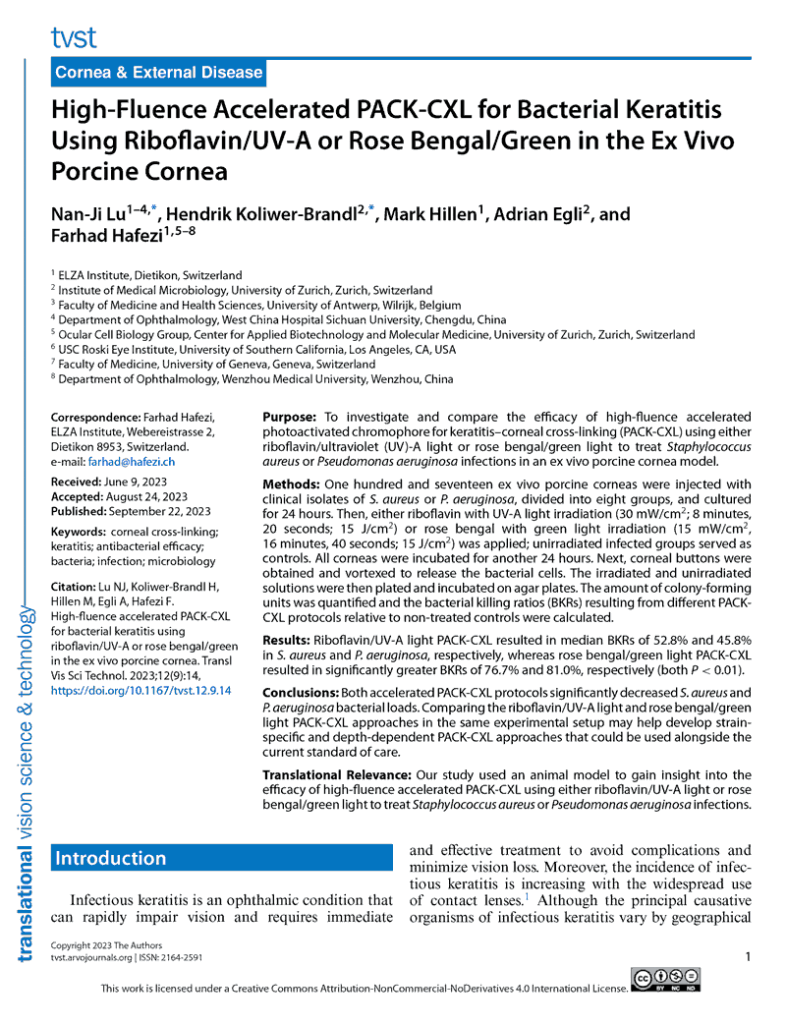We at the ELZA Institute are proud to report on the publication of an important study in the journal, Translational Vision Science & Technology. The manuscript delves into basic science background behind innovative approaches for the bacterial keratitis treatment photoactivated chromophore for keratitis–corneal cross-linking (PACK-CXL), using riboflavin/UV-A or rose bengal/green in the ex vivo porcine cornea. Bacterial keratitis is a serious eye infection that can lead to vision loss or even blindness if left untreated. Current treatment methods, such as antibiotics, can be ineffective due to antibiotic resistance and may have adverse side effects. The study’s focal point is exploring alternative bacterial keratitis treatment strategies.
Our study aimed to investigate the efficacy of high-fluence accelerated-CXL using either riboflavin/UV-A light or rose bengal/green light to treat Staphylococcus aureus or Pseudomonas aeruginosa infections in an ex vivo porcine cornea model. Our results showed that both riboflavin/UV-A and rose bengal/green PACK-CXL protocols were effective in reducing bacterial colony-forming units (CFUs) in infected corneas. The bacterial killing ratios (BKRs) resulting from different PACK-CXL protocols relative to non-treated controls were also calculated, with the higher BKRs achieved by rose bengal/green PACK-CXL for both bacteria. These findings suggest that high-fluence accelerated PACK-CXL may be a promising alternative treatment for bacterial keratitis.
Our study has important implications for the future of corneal cross-linking and the treatment of bacterial keratitis. The use of riboflavin/UV-A or rose bengal/green PACK-CXL protocols may provide a safe and effective treatment option for patients with bacterial keratitis, especially those with antibiotic-resistant infections. Further research is needed to confirm these findings in clinical trials, but our study provides a strong foundation for future investigations. These results underscore the need for further advances in bacterial keratitis treatments, particularly focusing on antibiotic-resistant infections, and demonstrate that PACK-CXL looks like it will form an important part of treating infectious keratitis going forward.

